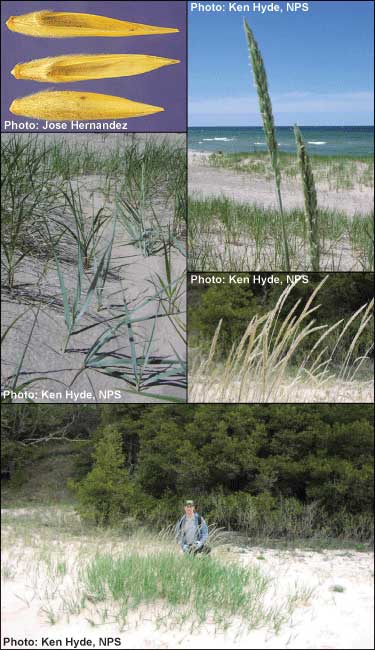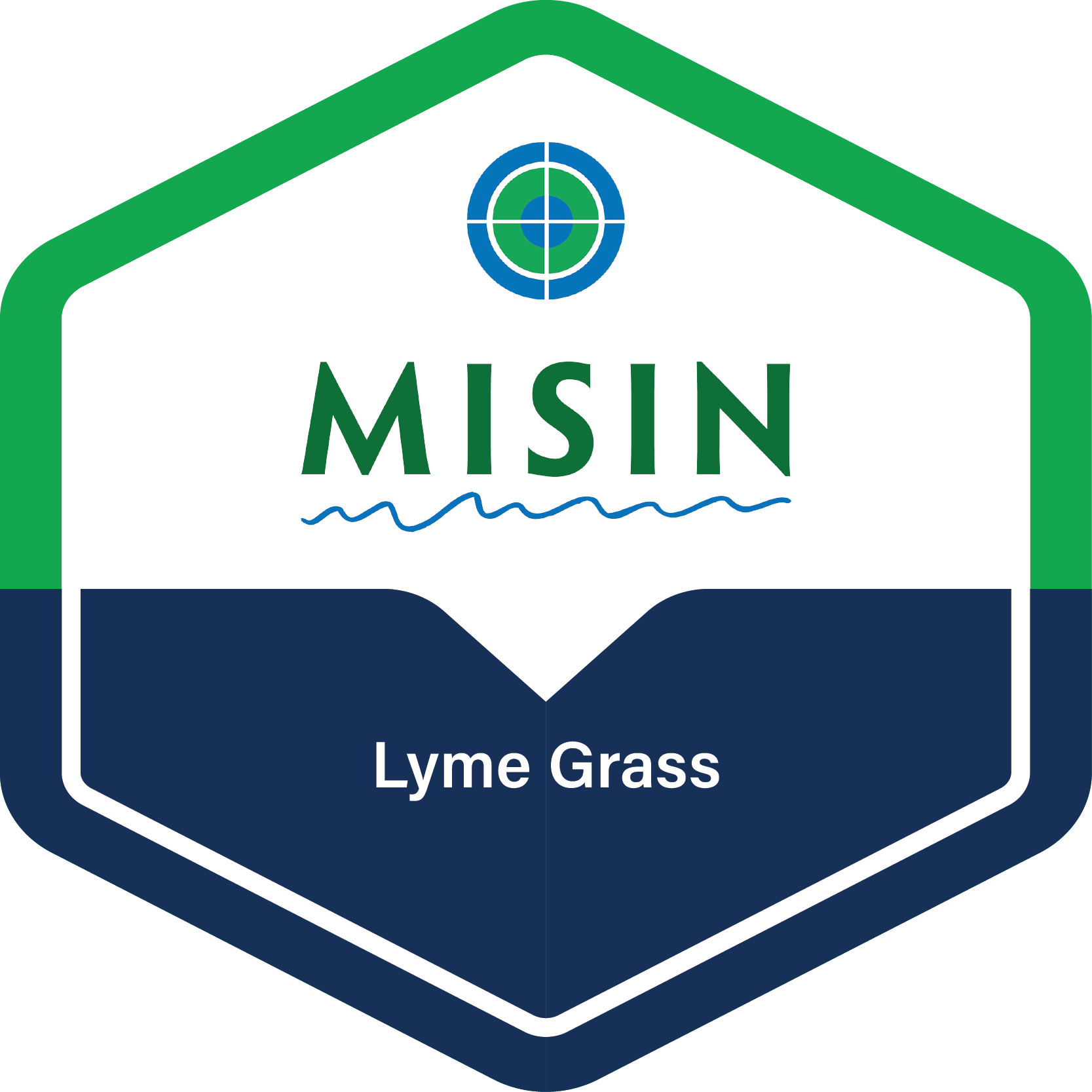Lyme grass (Leymus arenarius)
 Common Names: Blue lyme grass
Common Names: Blue lyme grassDescription: The species appears to be spreading following the lowering of Lake Michigan water levels; it invades beaches, dunes and other sites with sandy soils; stabilizes dunes, eliminating the shifting sands that are home to rare species such as Pitchers thistle (Cirsium pitcheri).
Habit: Perennial grass, stout, erect, growing from creeping rhizomes or in tufts, 0.5-1.5 m (1.5-5 ft) tall.
Leaves: Blue-glaucous, 6-15 mm wide, sheaths crowded at base, ligule barely 1 mm long.
Stems: Blue-glaucous, hairless or nearly so at the summit.
Flowers: Arranged in a spike with 4-6 flowered spikelets usually paired at the nodes on spike.
Fruit and seeds: Arranged in a spike, 15-25 mm thick.
Habitat: Native to Europe. It was introduced locally around the Great Lakes; thrives on calcium-rich sands; shade-intolerant; drought-tolerant; invasive on beaches and dunes.
Reproduction: Primarily vegetative, spreading via its creeping rhizomes; may also reproduce by seed.
Similar species: Native thick-spike wheat grass (Agropyron dasystachyum) is also blue-green but its spikes are only 5-10 mm thick; beach grass (Ammophila breviligulata) is green rather than bluish; reed grass (Calamovilfa longifolia) has a open panicle rather than a spike; American dunegrass (Leymus mollis) is greener and finely hairy under the spike, while Lyme-grass is bluer and its stems are hairless almost to the top. A dichotomous key or consultation with an expert should be used to distinguish between these species as several are rare.
Monitoring and rapid response: Monitor beaches and dunes adjacent to sites where this species has been used for landscaping. Lyme-grass can sprout from rhizomes and root fragments mechanical removal is not recommended; may be treated with herbicide in spring while native species are dormant; follow-up needed to ensure that all plants have been killed. Credits: The Michigan Natural Features Inventory (MNFI) has partnered with MISIN to provide the information in this fact sheet. Species images and/or information were used with permission from "A Field Identification Guide to Invasive Plants in Michigan's Natural Communities" and "A Field Guide to Invasive Plants of Aquatic and Wetland Habitats for Michigan.
Common Name: | Lyme grass |
Scientific Name: | Leymus arenarius |
Family: | Poaceae (Grass) |
Duration: | Perennial |
Habit: | Grasses |
USDA Symbol: | LEAR11 |
 View Species Course |
|
